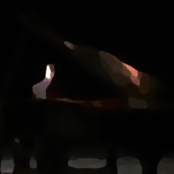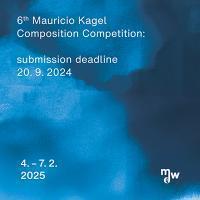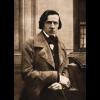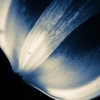Search the Community
Showing results for tags 'piano'.
-
This is a suite made of some new and not-so-new material. The name "Lake Suite" (Suíte Lacustre) comes from the surname of my friend Deborah Lago (lago = lake, in Portuguese), to whom this suite is dedicated. The movements are: 1 - Prelude 2 - Cantabile 3 - Elegy 4 - Ricercare 5 - Interlude 6 - Toccata
- 2 replies
-
- 1
-

-
- suite
- neo-classic
-
(and 1 more)
Tagged with:
-
Hi all. Here is the 4th movement of my recently finished sonata in E. It is generally in the style of Beethoven/Mozart. I am quite pleased with how it has progressed. I would value any feedback. I am blessed to be able to share it. The sheet music was written with MuseScore, which is a neat little program. If you wish to listen, simply go follow the link and hit play. Cheers. https://musescore.com/user/9350326/scores/2120656 Because it is being played off the score, it will lack a little of the human touch, but it will give a pretty good idea of the overall sound of the movement. :)
- 4 replies
-
- 4th movement
- sonata
- (and 6 more)
-
A brief piece for cello and piano I quickly wrote. It is among the first of the pieces that I've written in such a style, so I'm always looking to improve. Let me know your thoughts, and thanks!
-
Hi! I just started writing piano pieces, please let me know what you think of these four little compositions! 1) https://musescore.com/user/3451546/scores/1022141 2) https://musescore.com/user/3451546/scores/1114941 3) https://musescore.com/user/3451546/scores/2124431 4) https://musescore.com/user/3451546/scores/2108981 Thank you!
-
When I compose for the piano I can't help falling back to an easy listening - light classical genre... You can find 2 recent pieces here... https://www.youtube.com/results?search_query=composerpj86 The third piece was an improvisation from a cd that I made a few years ago.
-
We are looking for piano pieces written for children and young adults which, although limited in their technical difficulty, remain uncompromising in their artistic aim; pieces written with a contemporary compositional technique which offer the young student stimulus, insight and new experiences: experiences about oneself and the world in which we live. Composers younger than 40 years can submit pieces for piano that are suitable for children and young adults by 15 August 2015. The prize money totals 10,000 Euros. For further information please visit: www.mauricio-kagel-kompositionswettbewerb.com (German) www.mauricio-kagel-composition-competition.com (English) Mauricio Kagel Composition Competition 2015.pdf
-
- composition competition
- composition contest
- (and 8 more)
-
It's been a while since I've been on here. I have put dreams of writing a symphony off until I can manage a small-scale piece (solo piano, for instance), and spent the month of June writing a little bit of something (new) each day. Got through thirty days and had some good ideas in the mix, but the largest problem I had was developing them beyond the 8-10 bars that I'd constructed. That's another issue. I wrote this and somewhat unintentionally expressed the train of thought of an entire day at work (between meetings) despite my efforts to condense it. In the interest of time, I will post the actual question at the end of said train here, and again at the end of my actual post: Based on what factors does one determine whether it is a work of genius, a flop, an acquired taste, or just the housecat prancing around on the Steinway in the living room? An extension of that question, and I suppose the real heart of my issue is, based upon what can I critique the works that I write using this method? What will be my goal in expression if it is not tonal? And now for how I got there. Also, I promise this post about 'atonal' or 'serial' or 'twelve-tone' music or whatever you want to call it is not to troll... but I can see how it may seem that way (or seem like a very amateur question, which not be out of character). In that regard, I recently started playing around with writing out some twelve-tone matrices. The issue I was having with developing or broadening or expanding motivic material lies partly with my imagination, but the root of that problem is probably more in my lack of music theory knowledge (i.e. my ability to use and manipulate the rules of harmony, voicing, etc.). I've studied entirely on my own and have a very good general understanding of (the most basic) harmony, the ideas and concept and treatment of sonata form, and the like, but to get in and start writing music, voicing chords, etc. proves very difficult for me, so it's slow going and very rudimentary. Back to Schoenberg and his twelve tones. In composing in this manner, one of the decisions left to a composer is removed, or at least greatly limited. Generally speaking (incredibly vaguely), a composer deals with a few things: pitch duration orchestration tempo dynamic harmonization intonation or attack Composing based on a twelve-tone row greatly limits if not eliminates the variables of pitch and harmony (obviously hexachords and vertical use of the series are not out of the question, but not with the freedom of choosing to use a minor/major/diminished/ninth chord, etc.), so the others play a much greater role in the style/interpretation feel of the piece. I am realizing that just from my writing out of the matrix. Just to clarify, I'm not talking about integral/total/multiple serialism like in Boulez's piano sonatas, for instance. Just the pitches and their sequences. So my question, ultimately, is this: in the tonal scheme, with tonics and dominants and tonal centers, it is very easy for even a total beginner to hear a piece like a Chopin nocturne or a Mozart sonata and 'understand' it emotionally to some degree or other (happy, sad, peaceful, etc.) because of its use of tonal expression. Even late Scriabin pieces, while highly chromatic, still make use of tonality to express emotion and feeling. People will rate the quality of the music, whether it is 'good' or 'bad', based on their ability to understand it, which as Milton Babbitt has pointed out, only happens in music and politics. My question then, is this (I did say that earlier) : since the average human innately understands the pentatonic scale and has some foundation for understanding "good" use of harmonies to some degree, he can identify with "good" music, or music that adheres to the rules of harmony (more advanced, even to the point of identifying and appreciating key changes, and modulations and their relationships to the tonic). Not being able to hear immediately the relationships between notes in a twelve tone series once we get to the inversion and retrograde, etc. how is one to distinguish "good" serial music from "bad"? I can listen to Schoenberg's op. 11 with some degree of appreciation, but it's a stretch. I have absolutely zero comprehension for Boulez's sonatas or anything by Babbitt, though. Based on what factors does one determine whether it is a work of genius, a flop, an acquired taste, a work with potential, or just the housecat prancing around on the Steinway in the living room? An extension of that question, and I suppose the real heart of my issue is, based upon what can I critique the works that I write using this method? What will be my goal in expression if it is not tonal? I suppose that is a subjective and individual question, but it still seems one worth asking. Thanks in advance for thoughts and ideas.
-
Alright, so Sonataform and I have both written pieces for piano in the span of 3 days, and now it's up to you to decide who won. The criteria for judging are solely your own, choose wisely. Here are the entries Sonataform: http://www.youngcomposers.com/music/5879/variations-on-michelle-in-the-style-of-brahms/ Thatguy v2.0: http://www.youngcomposers.com/music/5877/cheese-at-night/
-
Hi friends, Ezra Donner here, coming to you from Bloomington, Indiana. As a holiday present, please enjoy 3 free mp3 downloads from my latest album, Steel Sky! Featuring original works for solo piano composed 2009-2011. Just visit this page to download your music: http://www.ezradonner.com/free-download/ Yours, Ezra
-
Theme and Variations Piano Composition Contest Due Date: Nov. 15th, 2013 Winner will have their work recorded by me (I have a Steinway Grand at my disposal :thumbsup:). I'm might have a chance to premier it as well next summer, but I'll need to confirm this at a later date. Guidelines: 1. The piece needs to be in theme and variations form. 2. The theme is yours to choose but it must have NO repeated sections (Beethoven's c minor variations WoO 80 is a good example of what I'm looking for). I'd prefer a theme that is short and sweet (under 24 bars). It could be an original theme or a theme by another composer (as long as there is no copyright infringement of course). 3. The piece should be under 15 minutes. 4. The hardest pieces I've performed include Chopin's 4th Ballade and the Heroic Polonaise op 53, Scriabin's Etude op 8 #12, Beethoven Sonatas and Bach preludes and fugues. If you could keep the difficulty level at or under those pieces that would be appreciated ;) Other things to keep in mind : 5. I would prefer if the piece showcases a variety of styles. Breaks between variations are expected but I encourage you to try and bridge a few together (it's not mandatory). 6. You are welcome to compose in any style(s) you choose (Baroque, Romantic, Impressionist, the modes of limited transposition, 12 tone, ect...), it's up to you. 7. Submit the piece at any time before the due date and I'd be happy to give some advice on the piano writing. 8. And most importantly, Have Fun! I really hope this catches people's interest, I look forward to your submissions. Good Luck! :cool:
- 25 replies
-
- 1
-

-
- theme
- variations
-
(and 4 more)
Tagged with:
-
General Information Bachelor of Music undergraduates from any Australian tertiary institution are invited to enter the inaugural Duo Entendre Composition Competition. Applicants will be required to submit a composition of up to 5 minutes duration for the instrumentation of horn and piano*. The work can be of any style providing that the score is legibly notated with computer software. Electronics and prepared piano can be utilised providing clear instructions are given. *Stuart & Sons 102 key Concert Grand - see Stuart and Sons website for specifications. Prize The winning composer will receive a $1000 prize. A concert program including the winning composition will be devised from the entered works. This free concert will take place on Sunday October 5, 2014 at 3pm in the Harold Lobb Concert Hall, Newcastle Conservatorium. The winner will be announced at this concert. Full details and entry form available from our website: http://www.duoentendre.com/competition.html
- 1 reply
-
- composition
- competition
-
(and 2 more)
Tagged with:
-
This is a very intense piece, romanticism at the maximum. In English it is called "Love Death". Dying for love, is it supposed to be sad? I am not sure... Not if you are a lover. So, it is the final piece played at the opera called Tristan und Isolde; and it is sung. But here is the orchestral version, which I prefer over the sung one. I think I have listened this piece 100 times in the last days, as it is so delightful. And after being searching and listening for many versions, I found this one: Which is the Liszt transcription to piano, but it is not played as pianists usually play it, but in a very special and personal way, by pianist Ervin Nyíregyházi. I listened to the other piano versions, but this one is... the best. Almost as intense and affective as the orchestral version, with a piano... You should listen first the orchestral version, and later the piano version. You will be delighted, with both.
-
I know that there is a line that can be written, as the pedal line, but indicating it is the sostenuto pedal. But I have found other scores that seem to call -or could be played with- the sostenuto pedal, without writting the lines. And I was asking myself if that is allowed. Also, if it is allowed, what is the best way to write it. In example, I have these two scores, that have the notes as indicating different instructions for two instruments -as in violins pentagram in an orchestral score-. Mussorgsky, Bilder einer Ausstellung, Promenade: Bach, Praeludium I, BMV 846 At the first one, in the G key pentagram, we can see two white notes, being played at the same time other black notes are played in the same pentagram. At the second one, at the F key pentagram, we can see again two white notes being played, and other notes played too. But you can see that the first one does not have silences for the second instrument to be quiet until played, and the second one does have silences. Obviously there are not a second instrument, and this indicates something that would be played with the same hand. The musescore program lets me put it or make it invisible. So I am not sure what to do here. If I am writing a score that requires the usage of the sostenuto pedal, may I write the sustained notes as if they were a second instrument, and without silences? Is it obligatory to use the pedal line? I think it looks better using the score as if there were two instruments. But I need to know if this would make my score unintelligible. I think it is more elegant than a lot of ligature lines, and easier to understand than a sostenuto pedal line (as you actually show what notes you want to be sustained). I was thinking in things like this: The second seems to be impossible to play without making the other not sustained not at the same time played, be sustained; or stretching a lot the fingers.
- 9 replies
-
- counterpoint
- mussorgsky
-
(and 4 more)
Tagged with:
-
I have recently completed a revamped keyboard sonata originally composed by the 18th century Spanish composer Antonio Soler. The sonata is in MIDI format, and I'm wondering if any of you guys know if this kind of composition can possibly be submitted to kunstderfuge.com, which is a site that deals with classical compositions in audio format. You see, the sonata is mostly the work of Soler, and I copied most of the music from free sheet music written by the original composer, and I merely edited and added parts to the work. So, if it is possible to upload this kind of work to that website, how should I go about doing it? If it is not possible, where would be the best website I could go about sharing it?
- 4 replies
-
- kunstderfuge
- soler
-
(and 2 more)
Tagged with:
-
I just wrote a blog post featuring resources that have been very helpful for me in learning to play the piano/keyboard. Hope you guys will benefit from this as well: http://marklaukkanen.tumblr.com/post/27709974418/five-excellent-resources-for-piano-players
-
Hello fellow pianists :-) I would like to hear your opinion. I am the university student and this year I am working on my bachelor's thesis. I would like to make a smartphone application that would help the piano students or composers to easily transfer their ideas to piano score. The application would be capable of recording someone playing the piano then it would recognize the single notes or polyphony, the rythm and finally it would generete the MIDI output. The MIDI output could be then imported to some 3rd party dekstop software (like Finale, etc.) to obtain the classical piano score. Before I start I need to know whether you, pianists, would even like to use such an application. So would you use an application that can recognize and process the piano sound and generate the MIDI output? And if so what mobile platform would you prefer? Android / iOS / Windows Phone / Symbian / BlackBerry / anything else? What do you think? I really need your feedback and I would appreciate every answer! :-) Thanks in advance.
- 9 replies
-
- piano
- smartphone
-
(and 6 more)
Tagged with:
-
link del post en taringa: http://www.taringa.n...237/Chopin.html Federico Chopin http://2.bp.blogspot...1600/Chopin.png Uno de los mejores compositores lejos... Nadie puede compararse en tecnica compositiva, pero sobre todo en esa cosa muy dificil de explicar, esa pasion en cada compás. Hola, hace varios meses vengo trabajando en un projecto que empeze yo mismo, yo tengo 15 años, y quiero ser compositor. Toco el piano, y estoy aprendiendo música, para a los 18 ir a Polonia a estudiar composicion en el conservatorio. Yo tambien compongo , pero no puedo decir que soy chopin, todavia me falta aprender bastante. Para la poca gente que le interesa la música de este genio, aqui les dejo una ayuda para componer en su estilo. Por ultimo una pequeña reflexión personal: Es muy facil realizar un cálculo matemático, pero crear un buen compás de música es el mayor desafio que puede existir. Estilo musical de Chopin 1) El secreto de la composición es siempre variar las ideas y usar toda variante hasta que quede la frase deseada. Por ejemplo si estamos “trabados” en alguna frase y no sabemos como seguir podemos, tomar un papel y escribir distintas maneras para seguir, todas diferentes, y elegir la que mejor quede, este modo se llama descarte. 2) Se pueden crear todos los recursos compositivos imaginables. Esto quiere decir que no siempre la musica debe ser todo el tiempo “igual” , por ejemplo, en la clave de sol, la melodia, y en la clave de fa, primero la nota del bajo y luego el acorde. Sino que hay millones de formas infinitas de escribir la musica, para que no sea tediosa, un ejemplo muy claro seria el siguiente: Rondo op 1 , Frederic Chopin: http://a8.sphotos.ak...1_5082526_n.jpg En los primeros cuatro compases, marcados en rojo , hay una forma de expresar la melodia totalmente distinta a la parte azul. En la roja se muestra por octavas, Y en la azul se muestra como anteriormente dije, melodia y bajo/acorde. Luego esto CAMBIARÁ para que no sea tan tedioso escuchar toda la pieza igual: http://a1.sphotos.ak...6_6782487_n.jpg La parte azul se mantiene hasta que en un momento vuelve a la forma roja, parecida a la del comienzo pero una Melodia distinta. Es cuando entonces llega la parte verde. Cambia totalmente la forma de la melodia y el bajo, se puede apreciar que es totalmente distinta a las dos anteriores. Eso es lo que Chopin buscaba, que la pieza no sea siempre igual o tediosa y para esto hay un monton mas de recursos, porque como se puede apreciar sigue estando en el mismo tono. Luego si cambiara de tono, pero estando en el mismo hay muchos recursos que uno puede INVENTAR, para seguir la obra. 3) El fraseo y la “cantabilidad” son los elementos principales y característicos en la música de Chopin. Quiere decir que la melodía debe poder ser cantada. Otro de los aspectos fundamentales es el empleo de un rubato muy característico de este compositor: el rubato reservado para la melodía; una melodía entendida como foco de atención, que se desarrolla con independencia respecto al acompañamiento. 4) En Chopin es particular el salto de séptima. Hacia arriba o abajo. Pero nunca resuelve este en la tónica sino que genera una frase. Este salto puede ser de 7 pero de dos octavas como en el último ejemplo y tambien de novena, etc. http://a5.sphotos.ak...0_1862014_n.jpg Nocturno en sol menor. Fa mayor resuelve en sib. http://a1.sphotos.ak...2_1654454_n.jpg http://a7.sphotos.ak...3_7538395_n.jpg 5) También los cromatismos. Antes de regresar a la tónica en el quinto grado en este ejemplo: http://a7.sphotos.ak...8_4107254_n.jpg Y en el juego en una nota con otras cercanas. http://a2.sphotos.ak...1_1772111_n.jpg 6) También repite notas rápidamente para acentuar. Esto es característico en su estilo. http://a6.sphotos.ak...3_4717794_n.jpg 7) A veces cuando esta en un quinto grado puede repetir la frase dos veces. Una terminando en un tono mayor y seguido de eso una terminando en un tono menor. 8) Chopin siempre agrega notas de paso para que el sonido no quede tan cuadrado. Es muy importante para la melodia el uso de notas de paso http://a7.sphotos.ak...4_1190061_n.jpg 9) El estilo de Chopin presenta muchas células de este tipo, Son muy caracteristicas del folclora polaco, de la mazurka etc: http://a5.sphotos.ak...7_4299137_n.jpg 10) Chopin generalmente no va demasiado grave en la armonía. No mas de 2 octavas abajo del do central pero hay momentos en que deja pasar esto. Tambien logre observar que el quinto grado es el unico que deja el bajo ir mas grave que al tonica, los demas grados ubica su bajo mas arriba que el de la tonica. 11)Se observa además sobre el cromatismo la misma nota pulsada varias veces comenzando desde la octava. Esto se llama nota pedal o al revés desde arriba. También no tiene que ser siempre cromatismo pueden ser notas de la escalas etc. http://a6.sphotos.ak...8_7018497_n.jpg 12) El Mazur danza típica del sureste, (danza en tres tiempos (3/4) con acentos en el la melodia en el segundo y el tercer tiempo) se caracteriza por su paso deslizado, con ritmo punteado, Esta manera de componer la encontramos en sus valses, canciones, el Concierto en fa menor, la Fantasía núm. 13 y en sus 58 mazurcas. 13) Acorde disminuido muy característico en muchas composiciones de Chopin. Les da su toque armónico. Resuelve en el tono mayor del mismo acorde. http://a4.sphotos.ak...9_1994312_n.jpg 14) Las estructuras de los conciertos de chopin siguieron el ejemplo de los conciertos en el estilo de Jan Ladislav Dussek y Johann Nepomuk Hummel, con la que estaba familiarizado. Él estaba interesado en el diálogo de Beethoven entre los instrumentos, la orquesta y el solista, en un entrelazamiento de voces como hacía weber . Una importancia destacada es la visualización de las habilidades expresivas y técnicas del solista en los conciertos de Chopin. El primer movimiento del Concierto en Mi menor tiene tres temas, que son introducidos por la orquesta. El piano juega con el primer tema (compas 139), seguido por el segundo tema lírico (compas 155), acompañado por el motivo principal del primer tema en contrapunto del bajo. 15) Chopin añade muchas notas de paso y cromatismos cuando tiene que desarrollar un tema como por ej en el nocturno op 9 no 1. http://a7.sphotos.ak...0_3198958_n.jpg 16) Así como en las composiciones se pueden usar notas de paso también se pueden usar acordes de paso. Se puede sostener una misma nota con la mano derecha y cambiar de acordes con la izq., pasar por distintos y viceversa, con la nota suspendida en la izq. También pueden ser dos notas o más suspendidas. 17) Se pueden hacer escalas de más de una nota a la vez, por ej: de triadas o de dos notas a la vez.. 18) Usar distintos bajos con el mismo acorde. O el mismo bajo con distinto acordes, por ejemplo el bajo sol, con el acorde sol menor o do menor. Es un recurso si no hay espacio en el compás o puede usarse en toda la obra. 19) Si se quieren escribir acordes cromáticos se pueden usar inversiones de otros que queden cercanas al acorde de donde se está. 20) A veces se puede transportar a una misma frase a otro tono, esto sería como repetirla pero un poco mas aguda. Por ej: si se esta en do menor se puede tocar la misma frase en fa menor luego. Mirar rondo op 1. 21) Todo se puede hacer en una composición lo mas importante es recordar que aunque se piense que algo es absurdo se puede convertir en algo muy bello si lo armamos adecuadamente. 22) Finalizar una idea con esta célula da una sensación de acabada. Este acabado se ve en muchas obras de bach, y además de en el rondo op 1 de Chopin. http://a1.sphotos.ak...31_445172_n.jpg 23) También se pueden usar acordes arpegiados rápido sin el bajo para no ser tan repetitivo. 24) En Chopin hay algo de contrapunto escondido en las partes rápidas con las dos voces interiores. A veces las voces exteriores hacen movimiento contrario, una escala va hacia arriba y la otra hacia abajo. 25)Para el comienzo de la obra por ej si es anacrúsico se puede tocar una nota y sostenerla tocar el bajo y que la nota sigua sonando como en el principio de la mazurca op 6 no 1 de Chopin. 26)A veces para pasar de un tema a un tema b Chopin lo hace mediante una nota de paso cromática. Por eso cuando termina el tema a deja la última nota a distancia de un tono de la nota principal del tema b para pasar mediante una nota cromática. Mirar mazurca op 6 no 2. 27) Cromatismo abierto: Muy característico en el romanticismo y en la música de Chopin. http://a5.sphotos.ak...3_5752698_n.jpg No tiene que ser si o si a la octava sino que puede ser de otros intervalos. Vals op 64 no 1. 28)Los estudios de Chopin son ricos en armonía y se puede usar para aprender. Observar estudio op 10 no 11. 29) Es muy característico del romanticismo tocar un acorde de nuevo y cambiar algunas notas del acorde cromáticamente o simple mente moviendolas para dar una sensación de aumentación o otras. Se puede además empezar de uno aumentado a uno de reposo como en el principio de la balada no 3. http://a2.sphotos.ak...35_536528_n.jpg 30) También además de cambiar algunas notas otro recurso sería mover la armonia cromáticamente. Vals op 34 no 1. http://a4.sphotos.ak...6_8176211_n.jpg 31) Estos saltos son muy característicos en Chopin cuando quiere darle fuerza: http://a3.sphotos.ak...9_5053670_n.jpg 32) Cadencia con progresión: Muy característica en Chopin. http://a4.sphotos.ak...3_6813908_n.jpg 33) Cromatismo en el bajo: las demas notas quedan iguales. http://a1.sphotos.ak...4_1518347_n.jpg 34) Balada no 3. http://a3.sphotos.ak...47_521089_n.jpg Progresión muy característica en muchas composiciones de Chopin. Apoyaturas en el bajo si y re, progresión VI – I 35) El cantabile de Chopin demuestra sus apoyaturas cromáticas que le dan su estilo melódico. 36) Como recurso melódico se puede emplear lo siguiente con notas del acorde en la voz interna y cromatismos en la voz superior: Las notas del acorde están marcadas. http://a6.sphotos.ak...9_1295904_n.jpg 37) En esta cadencia Chopin abre el acorde de dominante y luego resuelve distinto porque hace sonar el acorde de tónica más suave. Estos arpegios son característicos de él. http://a5.sphotos.ak...2_3843680_n.jpg 38)Un recurso que Chopin utiliza al terminar una obra es repetir muchas veces el mismo compás con el mismo bajo. Esto da una sensación como que el sonido se va alejando, por eso esta indicado perdendosi y va cada vez más suave. Mazurka op 24 no 3. http://a3.sphotos.ak...3_5625677_n.jpg 39)Chopin a veces utiliza notas muy cercanas como nota pedal en las mazurcas. http://a3.sphotos.ak...8_4812642_n.jpg 40)Sus mazurcas se caracterizan por tener una pequeña sección armonica-cromática, en algunos compases. http://a5.sphotos.ak...9_3749898_n.jpg 41) Aca un ejemplo de cómo usa muchas veces el mismo acorde en el bajo, pero con notas distintas en la voz superior. Esto no lo hace durar mucho, sino seria muy monótono. http://a4.sphotos.ak...0_3212709_n.jpg 42) Un recurso para que nuestra composición quede bien sería agregar una escala rápida en algun momento, ya que las partes rápidas vuelven a llamar la atención del que escucha.
- 9 replies
-
- 1
-

-
- chopin
- composition
-
(and 2 more)
Tagged with:
-
Since Paul and Robert were going to listen, I decided to add a little description to the 3 amazing piano concerti of Rautavaara. if you have spotify I recomment the recording of Gothoni, for the 1st and 2nd concerto Concerto 1, mvt 1: http://www.youtube.c...h?v=ank-lcc-bhU (with score) This concerto opens with left hand piano runs and right hand clusters. These ingredients will continue to play an important role the whole movement, while it is quite lyrical. A combinations is especially noteworthy, the piano plays a soft gentile B theme, while at the end of a phrase plays really loud clusters. The effect is really cool. The 2nd movt ( ) is a sweet middle pianoconcerto movement.The 3rd ( ) is rather energetic, danceable, where he added small introjections/trills by several winds like a painter adds blobs of piant.The 2nd concerto ( ) is similar and different of the 1st the same time. Hazy fast figures introjected with harsh moments (flexatone!) remind of the 1st concerto. But the tone is more sad. This concerto features a rather lyric and painfully beatiful mourning-theme that is exposed in the first and recaps in the 3rd movement. This theme is played so often, between the percussion interojections, the effect is that of a profoundly sad ostinate. I found this one the hardest to learn to appreciate, but now I probably like this one the most.The 3rd concerto ( ) is more different. The interesting thing about the harmonies is the pure counterpoint, because of the mirroring bass. The restult is quite pretty bitonal. Then the piano plays nice chords, accompanied by the strings.The 2nd mov is again the normal expressive piano concerto mid mvt ( )The 3rd is like it suposed to be the energetic finale, but I can't find it on youtube.
-
-
I have been playing piano for about 6 years now, and have just recently (the past month or so) started composing my own piano pieces. I mostly play contemporary music and improv, but I have taken an interest in classical music, more specifically, bagatelles, preludes, etudes, and sonatas for the piano. My question is this: What gives a piece that "classical sound". When I compose a piece, and listen to it, it sounds very contemporary and modern. How can I achieve a more classical era style? Are there specific rules or guidelines that these composers follow? Thanks.
-
A little music background: I played the piano since the summer before sixth grade. I took private piano lessons with various teachers (not the kind you might meet at a conservatory of music or a college) until I quit about five months ago. Now I'm on my own, and I'm going to teach myself to become a virtuoso pianist. The daily practice routine I'm following is 1) Hanon exercises 2) scales and 3) three to four piano pieces. Also, I've recently taken the position of piano accompanist for my high school's choir, so I have to learn piano accompanist parts in addition to my current routine. The musical pieces I'm currently learning aren't easy though (Hallelujah for example). I need some advice on how to practice difficult pieces and what is an effective practice routine. I'll really appreciate it if anyone can give me some good tips!
-
The Piano Vs The Computer in Modern Popular Music?
Amon Jura posted a topic in Advice and Techniques
So I recently loaded up Spotify (Free music listening software for those less computer savvy :P) and on the opening page there are some album art covers of artists you may be interested in. Anyways it dawned on me that all of the musicians listed had no real musical training. It got me thinking. In todays society do you reckon that more and more people are not starting or sustaining instrument lessons instead using thier knowledge of software such as Logic or Cubase to create music in a digital domain instead? and is the piano still used as much as it was in the early 20th century or even the 70's/80s with such performers as Elton John and Billy Joel? Long question i know but just would be interested to find out what other peoples perspective is on the matter :D thanks in advance















